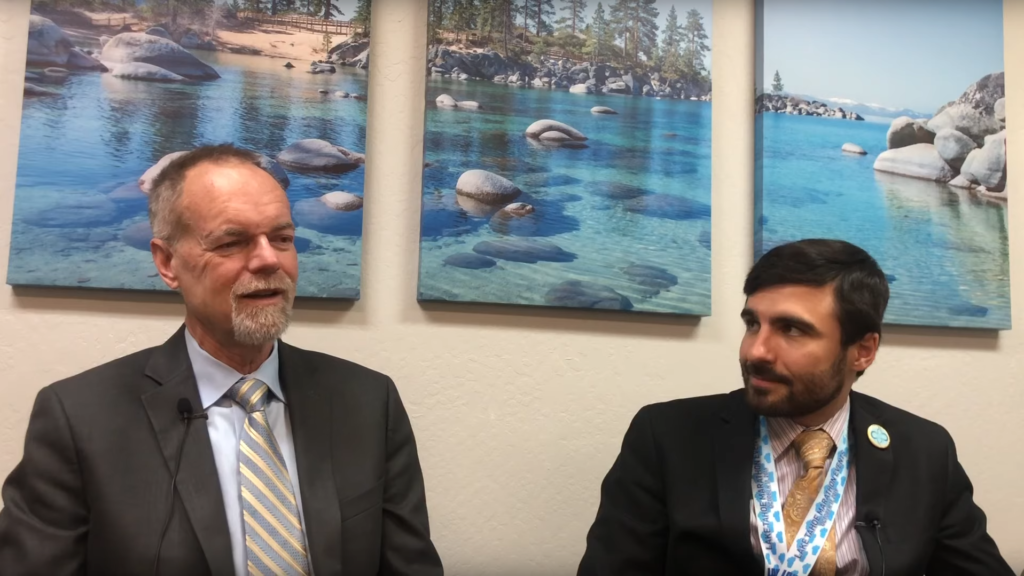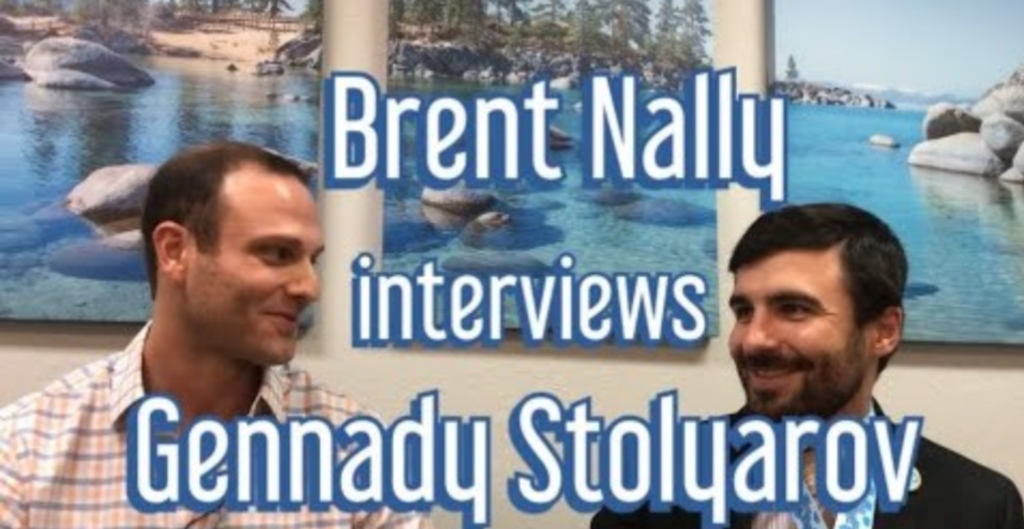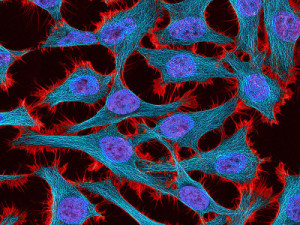Aging, inflammation, cancer, and cellular senescence are all intimately interconnected. Deciphering the nature of each thread is a tremendous task, but must be done if preventative and geriatric medicine ever hope to advance. A one-dimensional analysis simply will not suffice. Without a strong understanding of the genetic, epigenetic, intercellular, and intracellular factors at work, only an incomplete picture can be formed. However, even with an incomplete picture, useful therapeutics can be and are being developed. One face is cancer, in reality a number of diseases characterized by uncontrolled cell division. The other is degradation, which causes a slue of degenerative disorders stemming from deterioration in regenerative capacity.
Now there is a new focus on making geroprotectors, which are a diverse and growing family of compounds that assist in preventing and reversing the unwanted side effects of aging. Senolytics, a subset of this broad group, accomplish this feat by encouraging the removal of decrepit cells. A few examples include dasatinib, quercetin, and ABT263. Although more research must be done, there are a precious handful of studies accessible to anyone with the inclination to scroll to the works cited section of this article. Those within the life-extension community and a few enlightened souls outside of it already know this, but it bears repeating: in the developed world all major diseases are the direct result of the aging process. Accepting this rather simple premise, and you really ought to, should stoke your enthusiasm for the first generation of anti-aging elixirs and treatments. Before diving into the details of these promising new pharmaceuticals, nanotechnology, and gene therapies we must ask what is cellular senescence? What causes it? What purpose does it serve?
Depending on the context in which it is operating, a single gene can have positive or negative effects on an organism’s phenotype. Often the gene is exerting both desirable and undesirable influences at the same time. This is called antagonistic pleiotropy. For example, high levels of testosterone can confer several reproductive advantages in youth, but in elderly men can increase their likelihood of developing prostate cancer. Cellular senescence is a protective measure; it is a response to damage that could potentially turn a healthy cell into a malignant one. Understandably, this becomes considerably more complex when one is examining multiple genes and multiple pathways. Identifying all of the players involved is difficult enough. Conboy’s famous parabiosis experiment, where a young mouse’s system revived an old ones, shows that alterations in the microenviornment, in this case identified and unidentified factors in the blood of young mice, can be very beneficial to their elders. Conversely, there is a solid body of evidence that shows senescent cells can have a bad influence on their neighbors. How can something similar be achieved in humans without having to surgically attach a senior citizen to a college freshman?
By halting its own division, a senescent cell removes itself as an immediate tumorigenic threat. Yet the accumulation of nondividing cells is implicated in a host of pathologies, including, somewhat paradoxically, cancer, which, as any life actuary’s mortality table will show, is yet another bedfellow of the second half of life. The single greatest risk factor for developing cancer is age. The Hayflick Limit is well known to most people who have ever excitedly watched the drama of a freshly inoculated petri dish. After exhausting their telomeres, cells stop dividing. Hayflick et al. astutely noted that “the [cessation of cell growth] in culture may be related to senescence in vivo.” Although cellular senescnece is considered irreversible, a select few cells can resume normal growth after the inactivation of the p53 tumor suppressor. The removal of p16, a related gene, resulted in the elimination of the progeroid phenotype in mice. There are several important p’s at play here, but two are enough for now.
Our bodies are bombarded by insults to their resilient but woefully vincible microscopic machinery. Oxidative stress, DNA damage, telomeric dysfunction, carcinogens, assorted mutations from assorted causes, necessary or unnecessary immunological responses to internal or external factors, all take their toll. In response cells may repair themselves, they may activate an apoptotic pathway to kill themselves, or just stop proliferating. After suffering these slings and arrows, p53 is activated. Not surprisingly, mice carrying a hyperactive form of p53 display high levels of cellular senescence. To quote Campisi, abnormalities in p53 and p15 are found in “most, if not all, cancers.” Knocking p53 out altogether produced mice unusually free of tumors, but those mice find themselves prematurely past their prime. There is a clear trade-off here.
In a later experiment Garcia-Cao modified p53 to only express itself when activated. The mice exhibited normal longevity as well as an“unusual resistance to cancer.” Though it may seem so, these two cellular states are most certainly not opposing fates. As it is with oxidative stress and nutrient sensing, two other components of senescence or lack thereof, the goal is not to increase or decrease one side disproportionately, but to find the correct balance between many competing entities to maintain healthy homeostasis. As mentioned earlier, telomeres play an important role in geroconversion, the transformation of quiescent cells into senescent ones. Meta-analyses have shown a strong relationship between short telomeres and mortality risk, especially in younger people. Although cancer cells activate telomerase to overcome the Hayflick Limit, it is not entirely certain if the activation of telomerase is oncogenic.

SASP (senescence-associated secretory phenotype) is associated with chronic inflammation, which itself is implicated in a growing list of common infirmities. Many SASP factors are known to stimulate phenotypes similar to those displayed by aggressive cancer cells. The simultaneous injection of senescent fibroblasts with premalignant epithelial cells into mice results in malignancy. On the other hand, senescent human melanocytes secrete a protein that induces replicative arrest in a fair percentage of melanoma cells. In all experiments tissue types must be taken into account, of course. Some of the hallmarks of inflammation are elevated levels of IL-6, IL-8, and TNF-α. Inflammatory oxidative damage is carcinogenic and an inflammatory microenvironment is a good breeding ground for malignancies.
Caloric restriction extends lifespan in part by inhibiting TOR/mTOR (target of rapamycin/mechanistic target of rapamycin, also called the mammalian target of rapamycin). TOR is a sort of metabolic manager, it receives inputs regarding the availability of nutrients and stress levels and then acts accordingly. Metformin is also a TOR inhibitor, which is why it is being investigated as a cancer shield and a longevity aid. Rapamycin has extended average lifespans in all species tested thus far and reduces geroconversion. It also restores the self-renewal and differentiation capacities of haemopoietic stem cells. For these reasons the Major Mouse Testing Program is using rapamycin as its positive control. mTOR and p53 dance (or battle) with each other beautifully in what Hasty calls the “Clash of the Gods.” While p53 inhibits mTOR1 activity, mTOR1 increases p53 activity. Since neither metformin nor rapamycin are without their share of unwanted side effects, more senolytics must be explored in greater detail.
Starting with a simple premise, namely that senescent cells rely on anti-apoptotic and pro-survival defenses more than their actively replicating counterparts, Campisi and her colleagues created a series of experiments to find the “Achilles’ Heel” of senescent cells. After comparing the two different cell states, they designed senolytic siRNAs. 39 transcripts were selected for knockdown by siRNA transfection, and 17 affected the viability of their target more than healthy cells. Dasatinib, a cancer drug, and quercitin, a common flavonoid found in common foods, have senolytic properties. The former has a proven proclivity for fat-cell progenitors, and the latter is more effective against endothelial cells. Delivered together, they they remove senescent mouse embryonic fibroblasts. Administration into elderly mice resulted in favorable changes in SA-BetaGAL (a molecule closely associated with SASP) and reduced p16 RNA. Single doses of D+Q together resulted in significant improvements in progeroid mice.
If you are not titillated yet, please embark on your own journey through the gallery of encroaching options for those who would prefer not to become chronically ill, suffer immensely, and, of course, die miserably in a hospital bed soaked with several types of their own excretions―presumably, hopefully, those who claim to be unafraid of death have never seen this image or naively assume they will never be the star of such a dismal and lamentably “normal” final act. There is nothing vain about wanting to avoid all the complications that come with time. This research is quickly becoming an economic and humanitarian necessity. The trailblazers who move this research forward will not only find wealth at the end of their path, but the undying gratitude of all life on earth.
Adam Alonzi is a writer, biotechnologist, documentary maker, futurist, inventor, programmer, and author of the novels “A Plank in Reason” and “Praying for Death: Mocking the Apocalypse”. He is an analyst for the Millennium Project, the Head Media Director for BioViva Sciences, and Editor-in-Chief of Radical Science News. Listen to his podcasts here. Read his blog here.
References
Blagosklonny, M. V. (2013). Rapamycin extends life-and health span because it slows aging. Aging (Albany NY), 5(8), 592.
Campisi, Judith, and Fabrizio d’Adda di Fagagna. “Cellular senescence: when bad things happen to good cells.” Nature reviews Molecular cell biology 8.9 (2007): 729-740.
Campisi, Judith. “Aging, cellular senescence, and cancer.” Annual review of physiology 75 (2013): 685.
Hasty, Paul, et al. “mTORC1 and p53: clash of the gods?.” Cell Cycle 12.1 (2013): 20-25.
Kirkland, James L. “Translating advances from the basic biology of aging into clinical application.” Experimental gerontology 48.1 (2013): 1-5.
Lamming, Dudley W., et al. “Rapamycin-induced insulin resistance is mediated by mTORC2 loss and uncoupled from longevity.” Science 335.6076 (2012): 1638-1643.
LaPak, Kyle M., and Christin E. Burd. “The molecular balancing act of p16INK4a in cancer and aging.” Molecular Cancer Research 12.2 (2014): 167-183.
Malavolta, Marco, et al. “Pleiotropic effects of tocotrienols and quercetin on cellular senescence: introducing the perspective of senolytic effects of phytochemicals.” Current drug targets (2015).
Rodier, Francis, Judith Campisi, and Dipa Bhaumik. “Two faces of p53: aging and tumor suppression.” Nucleic acids research 35.22 (2007): 7475-7484.
Rodier, Francis, and Judith Campisi. “Four faces of cellular senescence.” The Journal of cell biology 192.4 (2011): 547-556.
Salama, Rafik, et al. “Cellular senescence and its effector programs.” Genes & development 28.2 (2014): 99-114.
Tchkonia, Tamara, et al. “Cellular senescence and the senescent secretory phenotype: therapeutic opportunities.” The Journal of clinical investigation 123.123 (3) (2013): 966-972.
Zhu, Yi, et al. “The Achilles’ heel of senescent cells: from transcriptome to senolytic drugs.” Aging cell (2015).
 Gennady Stolyarov II
Gennady Stolyarov II





